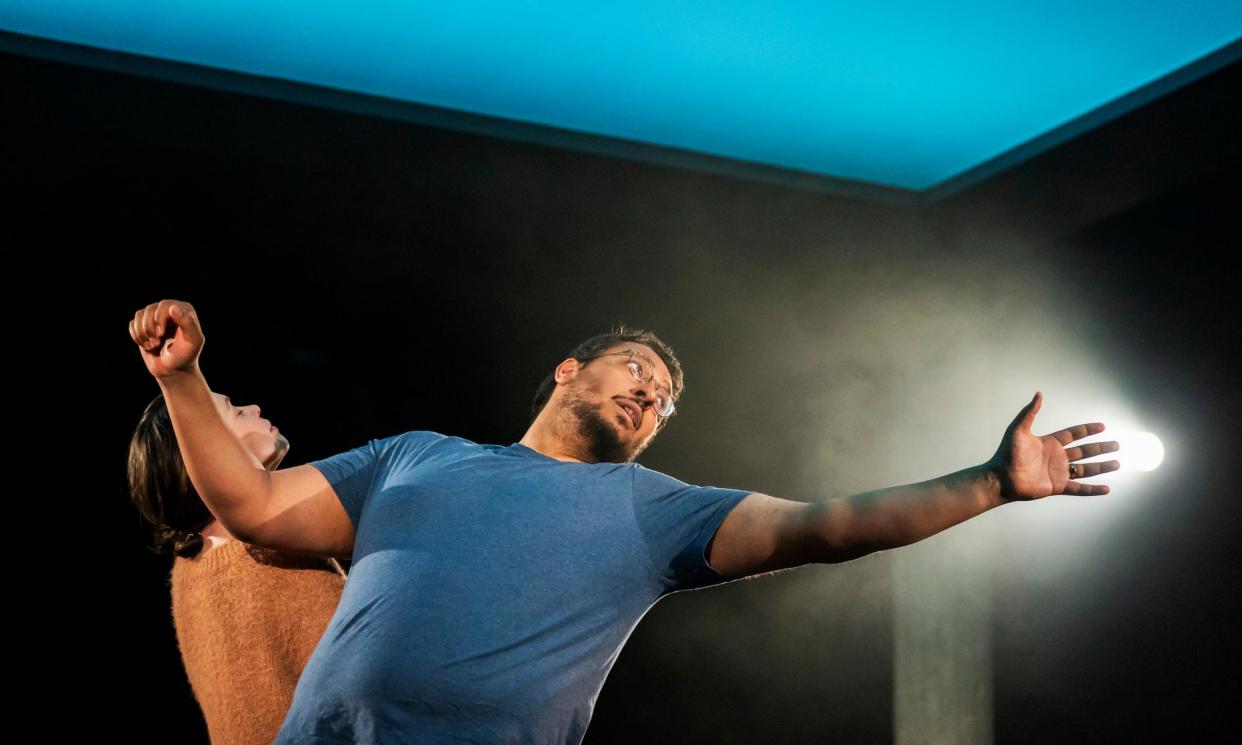The Cord review – daggers of judgment as a birth rocks a family

Amid the fuzzy glow from the birth of their son, new parents Ash (Irfan Shamji) and Anya (Eileen O’Higgins) are all bleary smiles. Ash eagerly imparts the knowledge he has picked up online: how the baby “can’t tell what’s him, and what’s not him”. Anya, recovering from medical complications, craves sleep, and some respite from her husband’s passive-aggressive asides about his parents not being allowed at the hospital. The baby is growing, but the couple’s resentments are growing faster.
In The Cord, writer-director Bijan Sheibani demonstrates an ear for those conversational jolts and jabs that can unsettle a domestic situation when it is still as delicate as a newborn’s fontanelle. Ash becomes an unhappy intermediary between Anya and his mother, Jane (Lucy Black), with her insinuating pauses, her little daggers of judgment. She and Ash have their own unresolved issues; as a boy, he wanted to be a doctor so he could “take your pain away”.
The action plays out on a square, elevated stage, the audience seated on all sides, with cast members returning to their corners between bouts – exactly like a boxing match. Primal battles from Ash’s childhood are worked through with a literalness that will please any therapists in the audience.
There is no obligation on Sheibani to be balanced. By concentrating on Ash, however, the play risks reducing Anya and Jane to the role of harpies. The impression is of a man besieged by demanding women, and prevented from bonding with the son he proclaims his “heir”. A bit more curiosity about Anya’s psychology wouldn’t have gone amiss.
In a verbose play, the most effective elements are non-verbal. The cellist Colin Alexander, stationed at one corner of the stage, provides a tremulous commentary. Oliver Fenwick’s lighting takes the form of a glowing overhead square, the surgical white light turning murky and troubled in concert with the characters’ moods. A skilful use of mime and movement links the scenes, with Ash twisting in the amniotic gloom, even curling into the foetal position. This is a man in utero, and there is a nagging feeling that the drama hasn’t reached full-term either.
• At Bush theatre, London, until 25 May.


